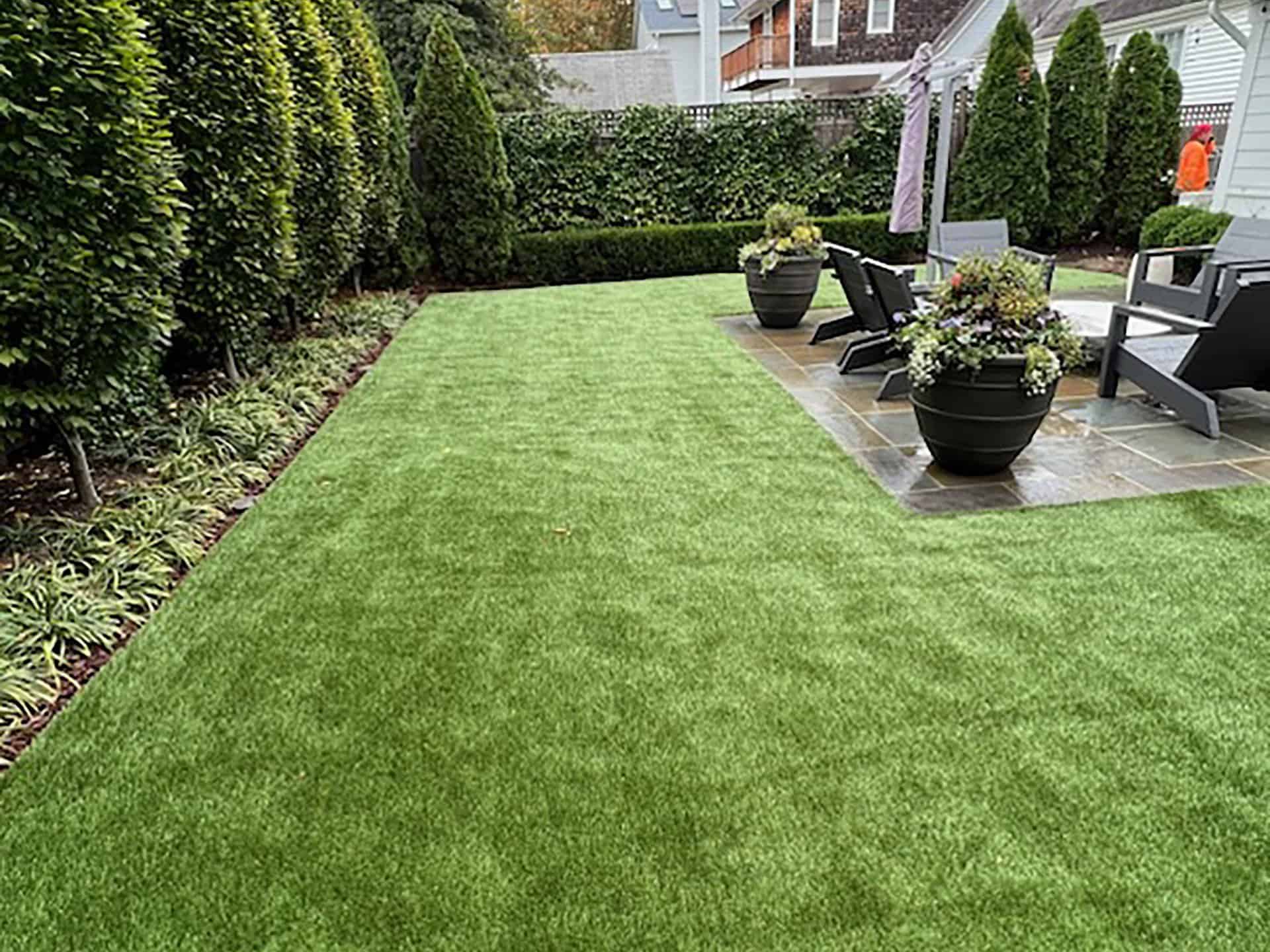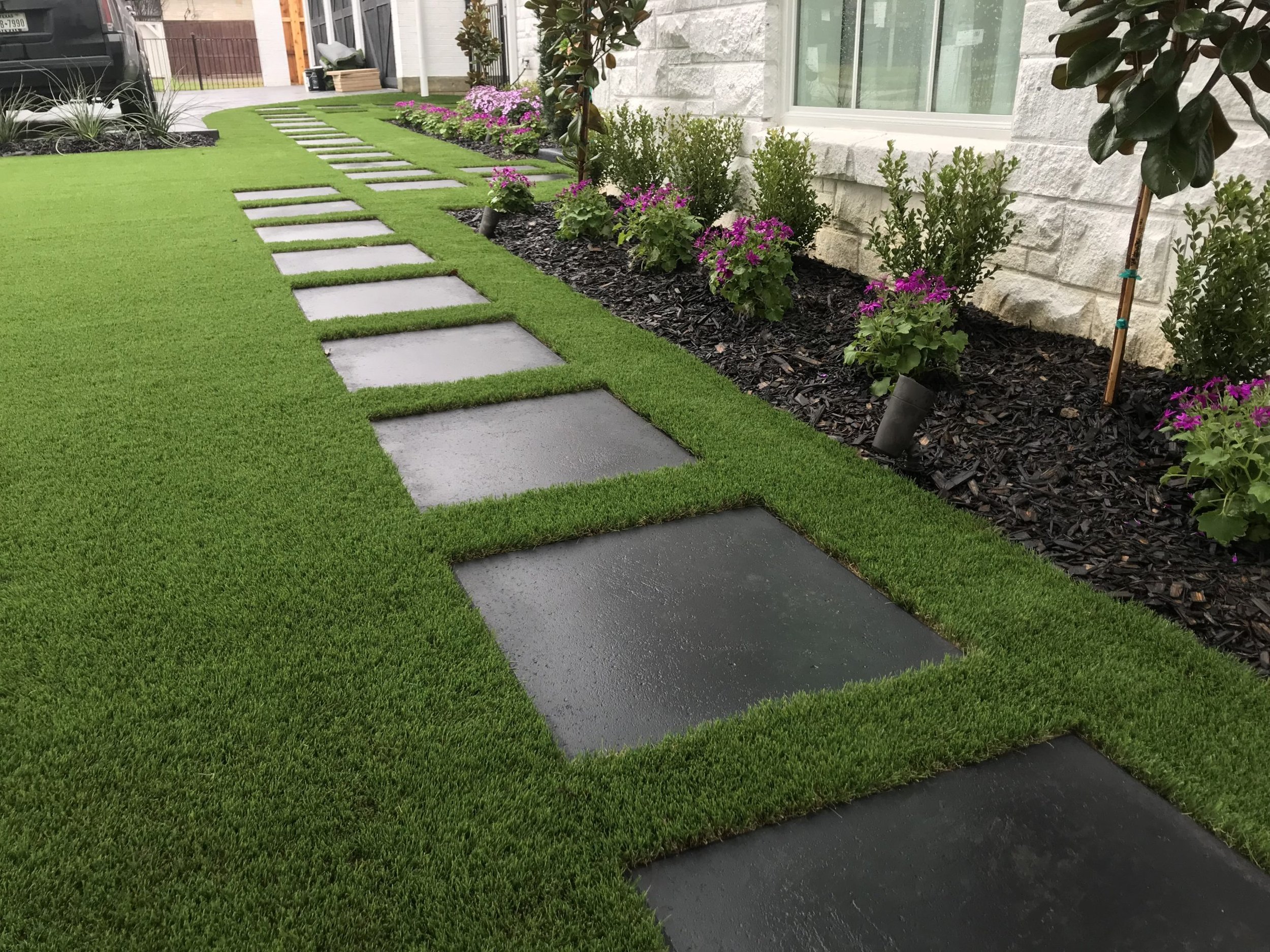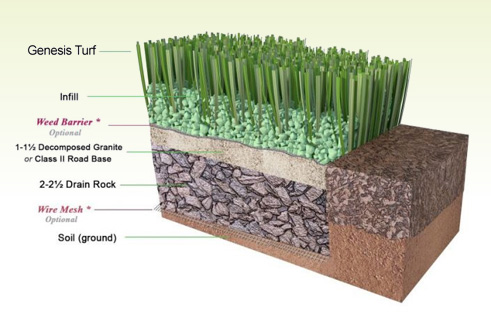Enhance Your Outdoor Space with Arizona Artificial Turf for a Vibrant Green Look
Enhance Your Outdoor Space with Arizona Artificial Turf for a Vibrant Green Look
Blog Article
Look Into the Environmental Benefits of Opting for Artificial Grass Solutions
The adoption of synthetic grass options provides a compelling opportunity to attend to pushing ecological challenges. By considerably reducing water usage and lessening the application of unsafe chemicals, these alternatives not just advertise sustainable landscape design however also safeguard neighborhood communities. The lower carbon impact linked with lowered upkeep activities adds to an extra lasting technique to land monitoring. Nonetheless, the ramifications of these benefits extend beyond plain preservation efforts, increasing inquiries about their long-term effect on environment conservation and overall ecological equilibrium. Discovering these dimensions reveals an intricate interplay worth taking into consideration.
Water Conservation Benefits
One of the most considerable advantages of man-made lawn is its ability to save water. In comparison, man-made turf does not need watering, significantly decreasing the general need for water sources.
By eliminating the demand for normal watering, synthetic grass adds to sustainable landscape techniques and helps alleviate the ecological effect of too much water consumption. The conservation of water expands to the reduction of drainage, which can lead to soil erosion and river contamination.
Furthermore, the installment of synthetic grass permits house owners and municipalities to allocate water resources more efficiently, concentrating on essential usages such as alcohol consumption water and agriculture. The shift towards man-made turf not just promotes liable water use yet likewise straightens with broader environmental goals focused on maintaining natural deposits.
As neighborhoods increasingly focus on sustainability, the water conservation benefits of synthetic grass provide a compelling situation for its adoption in domestic and business landscaping tasks.
Decreased Chemical Use
The transition to synthetic grass substantially decreases the dependence on chemical therapies commonly used in natural lawn maintenance. Typical turf management typically entails the application of herbicides, fertilizers, and pesticides to promote development and control pests. These chemicals can present dangers to human health, local wild animals, and the environment, adding to dirt and water contamination.
In comparison, synthetic grass gets rid of the requirement for these damaging compounds. Once mounted, it needs very little maintenance, mostly including routine cleansing and occasional infill replenishment. This decrease in chemical use not only benefits the prompt setting however additionally adds to wider ecological stability. By lessening the launch of synthetic substances right into the environment, man-made grass promotes healthier dirt and water supply.
Additionally, the lack of chemical runoff linked with synthetic grass setups assists protect local rivers from air pollution, supporting water life and keeping biodiversity. Turf installation phoenix az. As communities progressively focus on sustainable techniques, going with synthetic grass offers a practical service that straightens with environmental preservation objectives. Through this change, homeowner can enjoy lush eco-friendly rooms without jeopardizing eco-friendly health and wellness, paving the method for a more sustainable future
Reduced Carbon Footprint

Moreover, the installment of synthetic grass can result in considerable water conservation. Natural grass call for significant quantities of water for irrigation, which not just includes in the carbon impact related to water extraction and treatment but additionally strains local water resources. On the other hand, synthetic grass requires very little upkeep, calling for no watering, therefore significantly lowering water use and its connected power prices.
Additionally, the long life of synthetic grass adds to its lower carbon impact. With a life expectancy of up to 15 years or more, the need for regular replacements is decreased, causing less waste and why not look here reduced energy consumption in production and dealing with typical grass choices. In general, synthetic turf offers a sustainable choice for ecologically aware landscape design.
Habitat Preservation
Habitat preservation is an essential factor to consider in the argument over landscape design selections, particularly when comparing artificial grass to all-natural turf. All-natural grass yards usually need extensive upkeep, consisting of the usage of herbicides, plant foods, and pesticides, which can adversely influence local ecological communities. These chemicals can leach right into the dirt and rivers, hurting native plants and fauna and interrupting regional environments.
Fabricated turf eliminates the requirement for dangerous chemicals, thus protecting Going Here nearby wild animals and keeping the integrity of surrounding communities. The installment of fabricated turf can lead to the conversion of former turf areas right into even more biodiverse landscapes, such as pollinator gardens or native plant locations, which can support neighborhood wildlife.
Inevitably, the change to synthetic grass not only saves water and minimizes maintenance initiatives but also fosters a more unified relationship in between human activities and the native environment, advertising environment preservation while doing so.
Long-Term Sustainability
Lasting sustainability is a crucial consider reviewing the benefits of synthetic grass over conventional yard lawns. One of the most significant advantages of artificial grass is its durability; it can last approximately 15-20 years with marginal maintenance, whereas natural grass requires frequent reseeding and substitute. This durability reduces the need for continuous resources, such as water, fertilizers, and chemicals, which are important for preserving a healthy yard lawn.
Furthermore, synthetic grass adds to a reduction in carbon exhausts connected with yard care equipment. Typical yards commonly call for gas-powered mowers, trimmers, and blowers, every one of which add to air contamination. Artificial turf companies phoenix. On the other hand, synthetic grass eliminates the need for such devices, advertising a cleaner environment
Moreover, the manufacturing of artificial grass significantly utilizes recycled products, enhancing its sustainability account. As producers take on green methods, the ecological footprint of synthetic grass continues to reduce.

Final Thought
The fostering of synthetic grass solutions offers substantial ecological advantages, including significant water conservation, lowered dependence on dangerous chemicals, and a reduced carbon footprint. Moreover, fabricated grass aids in protecting all-natural environments by reducing land disturbance and advertising lasting sustainability with using sturdy materials. Collectively, these elements underscore the potential of synthetic grass to contribute favorably to ecological wellness and provide a viable alternative to conventional landscape design methods in a progressively resource-conscious world.
In contrast, artificial grass does not need watering, dramatically reducing the total demand for water sources. By decreasing the launch of artificial compounds into the ecosystem, fabricated turf promotes healthier dirt and water systems.
Additionally, the installment of synthetic grass can web result in considerable water conservation. In comparison, artificial grass requires minimal maintenance, needing no watering, consequently dramatically lowering water use and its connected energy costs.

Report this page